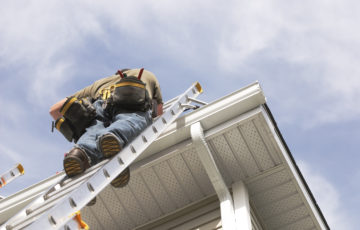Like any physical job, carpenters may experience a range of hazards, accidents and injuries. Creating wooden structures and furniture includes sawing, drilling, sanding and handling different types of wood. This article will discuss some of the risks carpenters might encounter while working, some suggestions on how you could prevent these to reduce any accidents.
Risks from Falling objects
Like any labour-intensive job, wearing the correct PPE might help avoid falling objects that may damage workers’ eyes, heads, arms, legs and hands. Carpenters might benefit from wearing the proper safety gear to reduce any dangers to their bodies that may prevent them from working.
Equipment that carpenters might consider wearing could include:
- Gloves – for protecting the hands from any electricity, splinters, sharp objects and germs
- Hard hats – from any force of impact to the head
- Safety goggles – that are fitted well for the eyes with a protective seal to avoid injury to the eyes
- Face shields – covering the face from any debris, sparks and projectiles
- Ear muffs and plugs – to protect the ears from loud sounds such as tools
- Safety boots – keeping your feet out of danger from cuts, sharp objects, compression and abrasion
Falls from heights
Whether you are working on a large structure or on a roof, you may be at risk of falling from particular heights leading to physical injuries. As falling is one of the top dangers for carpenters with various types of injuries, there are ways to prevent them by following some safety requirements. Whether you are working by yourself, with a team, or just managing other carpenters, following the proper guidelines may minimise any significant injuries or dangers.
Here are some of the recommendations that you can be mindful of during your work from the Model Code of Practice suggested by Safe Work Australia:
- Planning ahead of your sequence at work so that you are not constantly setting up and handling ladders or any suspended gangways.
- Ensuring you cover any gaps, holes or shafts without any guardrails so it reduces the risk of falling in
- Assemble what you can on the ground to minimise your time on the roof
- If you plan to work several days at heights, install some gangways on structural frames
- Make sure to check your ladder regularly for its integrity, ensuring it has no rust
- Placing signs next to any risks, such as deep shafts or electrical panels. This could help remind you and others to be aware of any hazards
- Add covers to nearby holes, pits or gaps that do not have any guardrails
Exposure to electricity
Managing this risk by using and handling proper equipment may be suggested to prevent any dangers for carpenters. Accidental electrocution may cause dangerous risks, including death, so keeping carpenters up-to-date with adequate training and safety courses and wearing the correct safety equipment could be necessary to minimise any risks and injuries. There may be times when carpenters might have to handle electrical wires, so having basic knowledge of electrical systems could come in handy, especially when handling work in any household or commercial projects.
Some tips that might help a safer workplace from electrocution include:
- Keeping all workers on site aware of the electrical wires that may be a hazard for tripping
- Checking if there are any exposed or broken wires and if they are faulty, avoid using it
- Uncoiling cords before use to prevent others from stumbling over
- Avoid carrying tools by the cord
- Unplugging electrical equipment before cleaning
- Consider using wireless and rechargeable devices rather than corded ones
- Ensuring all workers wear gloves that are in acceptable condition without any holes
- Keeping any electrical tools away from wet and moist areas
Back and body pain
Working in awkward and odd positions from repetitive tasks and lifting may cause back, and body aches. With the projects and long hours carpenters work, they might encounter discomfort from work tasks that could lead to exhaustion and pain. Ensuring workers take breaks and swap roles with others might be recommended. Back strains are common with carpenters due to the positions they work in particular spaces and tasks.
There are ways to avoid back and body pain while working. Listed below are some recommendations for carpenters below:
- Taking regular breaks from positions that may be uncomfortable during long periods could relieve your back and muscles from any tension
- When lifting a heavy object, keep close and bend with your knees. If it is too heavy, ask another worker to assist
- If you are working in a team, alternate tasks with others to avoid any repetitive work and motions
As a carpenter, your tasks may put you in situations where they may injure or become a risk for your health and career. Luckily, insurance for carpenters might be considered for their businesses to protect their hard work and reputation. Public Liability for carpenters can cover legal fees and compensation costs if a member of the public, supplier or customer sues you for any damage or injury to their property due to your negligent business activity. Carpenters may also benefit from a Business Insurance Pack as you can choose different business insurances that might suit you and your business. Having carpenter insurance can give you the peace of mind to ensure you are protected during unexpected situations.
This information is general only and does not take into account your objectives, financial situation or needs. It should not be relied upon as advice. As with any insurance, cover will be subject to the terms, conditions and exclusions contained in the policy wording.
© 2022 BizCover Pty Limited, all rights reserved. Public Liability Insurance is a trading name of BizCover Limited. BizCover Limited is owned by BizCover Pty Ltd (ABN 68 127 707 975)



